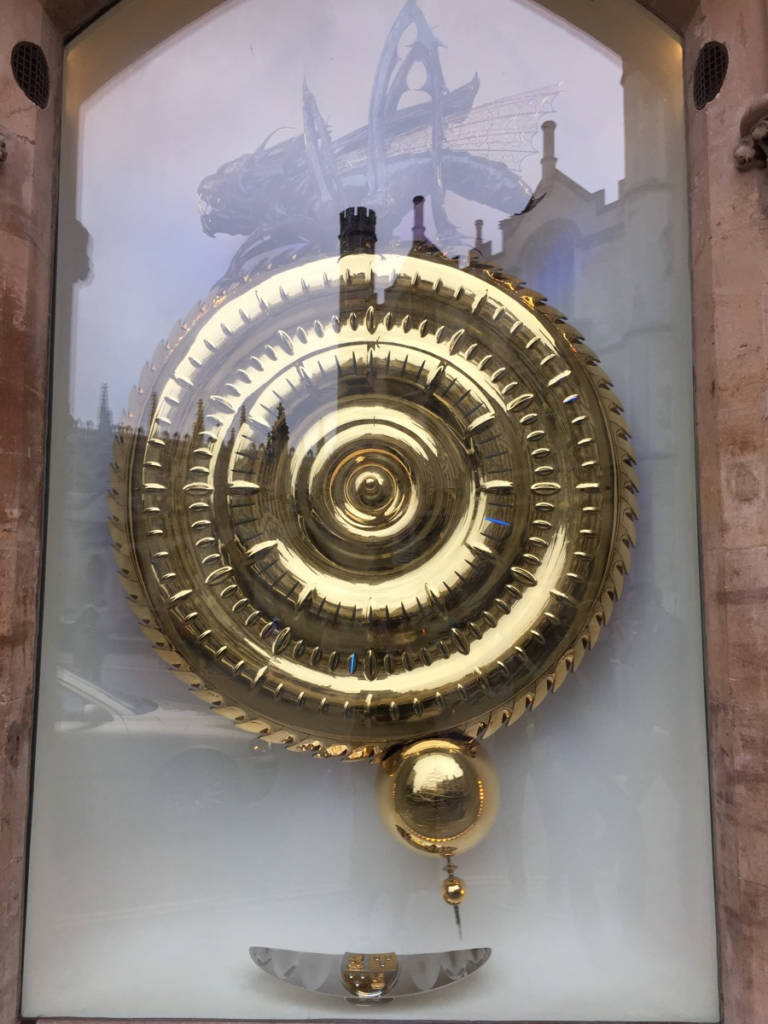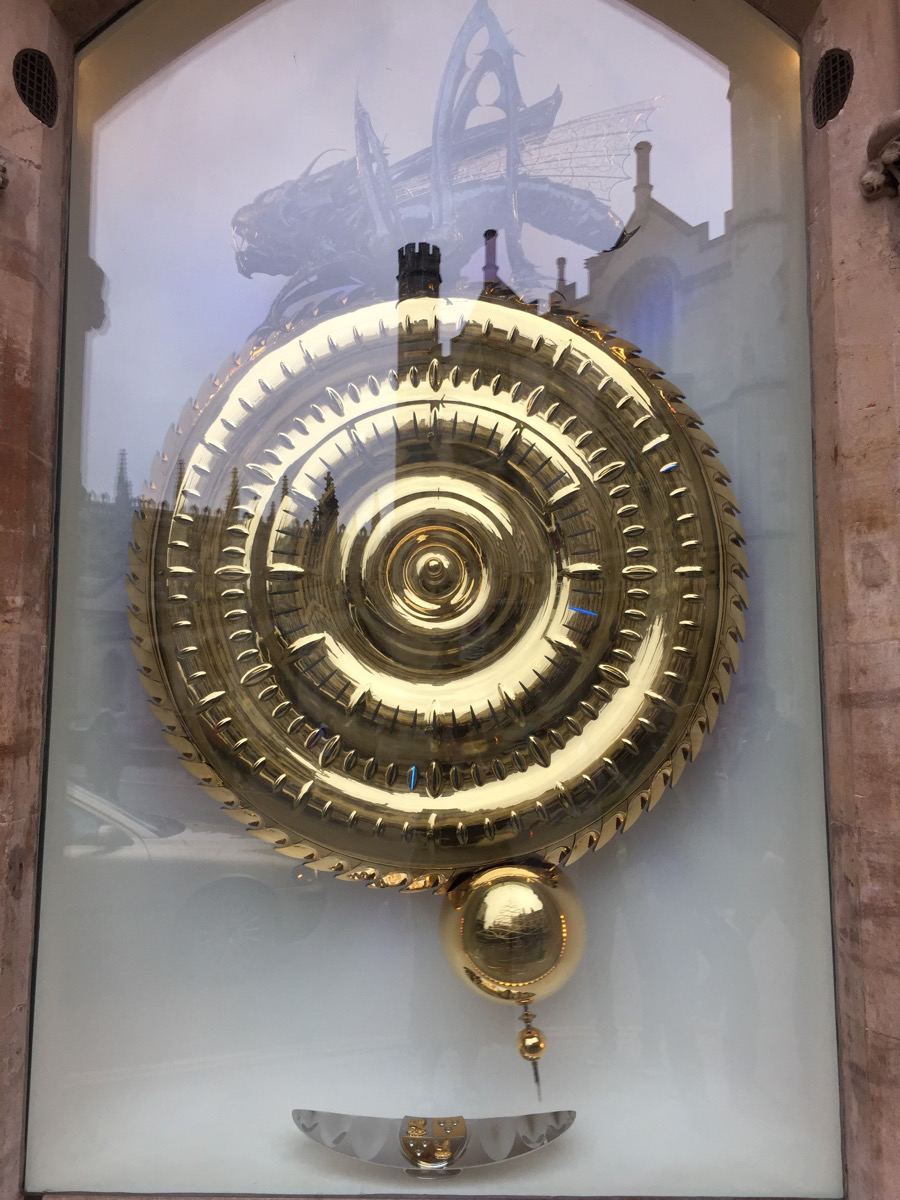One of the Cambridge landmarks that features in the latest book is the Corpus Clock.
The clock is this large, imposing creation set into the corner of Corpus Christi College where Trumpington Street and Bene’t Street meet. Old member John C. Taylor conceived and funded it. Professor Stephen Hawking unveiled it to the public on September 19th, 2008.
It stands there now, tocking sonorously but slightly irregularly (the clock is only ever accurate once every five minutes, a design feature that reflects the subjectivity of time). Usually during the day it is surrounded by a small crowd of tourists contemplating its hypnotic sound and movement:
The Corpus Clock is a wholly mechanical mechanism (there is a tiny electronic motor, but this runs the lights and LEDs on the disk) housed behind a plate of 24 carat gold. The the plate was formed by creating an underwater explosion to mold it at a secret research facility in Holland, because of course it was.
Chronophage – “The Time Eater”
The escapement of the mechanism takes the form of a beautifully sculpted and rather sinister creature in the shape of a grasshopper. This is the Chronophage, or the Time Eater. Its metal teeth ratchet rhythmically atop the disk as it turns – it devours the hours of the day.
Beneath all this, on the stone steps below the glass, a line from scripture is written: mundus transit et concupiscentia eius (“the world passeth away, and the lust thereof”).
So there stands Corpus Clock, an exquisite art object, mechanical wonder, and stern warning not to waste your precious time. And yet it exerts this captivating hold on the attention as you pause to linger at its feet. You stand there spellbound, your errands forgotten, watching the metal grasshopper devour the rest of forever, second by irregular second:


